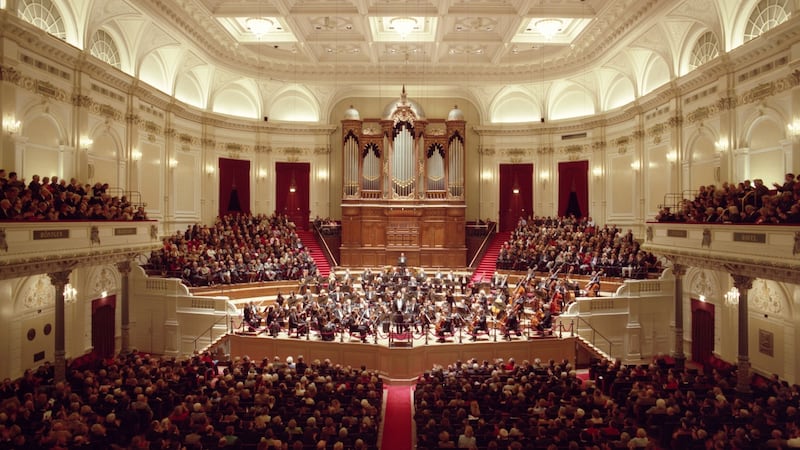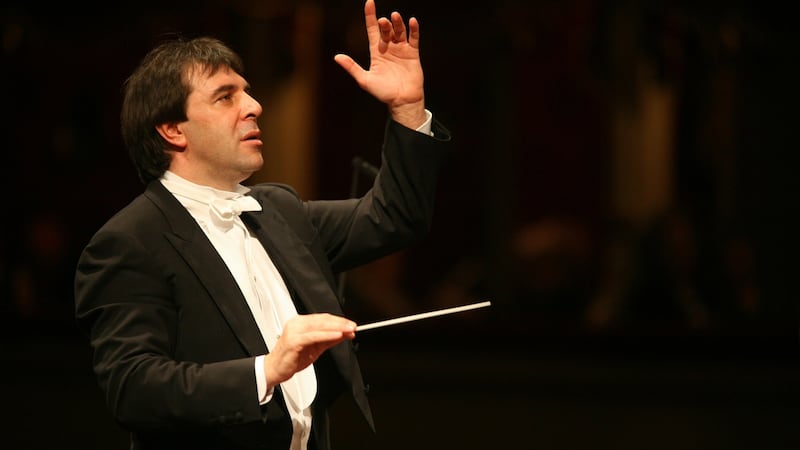Argentinian cellist Sol Gabetta made her first appearance in Ireland at the West Cork Chamber Music Festival in 2008. Her star turn was in Vivaldi, not just actual cello concertos, but also in a cello arrangement of Winter from The Four Seasons.
Since that time she has won the Gramophone Young Artist of the Year Award (in 2010), been nominated for a Grammy (for her album Duo with pianist Hélène Grimaud in 2012) and made her debuts with the Berlin and Los Angeles Philharmonics.
She’s back in Ireland on Saturday for an appearance with Amsterdam’s Royal Concertgebouw Orchestra and its incoming chief conductor Daniele Gatti, who will make his formal debut in that role when the orchestra opens its new season in its hometown next month.


She's playing Schumann's Cello Concerto, a work she says she didn't come to until "quite late". She's now 35, and she was 28 or 30 before she studied it. One of her main teachers, Ivan Monighetti, was against her learning it before she was 30.
“He thought it was one of the most difficult concertos, in all ways, technically, especially emotionally, and also musically. And he was right.”
The first time she played it, she says, even though she had played lots of Schumann’s chamber music, she didn’t really understand it.
She recorded it this summer with a chamber orchestra. We look at the Schumann, she says, as one of the great romantic concertos, grand in the manner of Bruckner, whose Fourth Symphony, the Romantic, closes the orchestra’s Dublin programme. But she likes to think of it more as classical repertoire, like the Schubert piano trios or Beethoven cello sonatas, repertoire where “every time I have the impression I have to start from the beginning”.
Schumann wrote the concerto in two weeks in 1850 and, although it was published in 1854, it had not been performed in public when the composer died in 1856. It is, by common consent, the first great romantic concerto, but Gabetta sees it as being quite different to Dvorak’s Cello Concerto or the violin or piano concertos of Brahms. “It’s not this big form. It’s an extremely compact form. Even if the melodies are very beautiful and easy for the public to understand, the construction is extremely difficult to understand.”
Syncopation and circularity
She points out that the work is full of syncopation – the ideas rarely start on the downbeat – and she describes the effect this creates as of a kind of circularity.
She has performed a lot with Giovanni Antonini and his period instruments orchestra, Il Giardino Armonico. She has followed his work with the Beethoven symphonies and she says he approaches the music as if it were completely new so that his performances "make it extremely three-dimensional". He is, as she puts it, "complicated in front of the music, and never happy, always with millions of questions".
They have worked together on the Schumann concertos, and she has been so won over by his approach that she has tried to avoid playing the piece with a large orchestra. “I was afraid I wouldn’t get the delicate, transparent structure there is inside of this composition.”
She agreed to do the work with the Concertgebouw because “it’s one of the best orchestras in the world, but they also have an incredible capacity to change and reshape their sound. Their character is adaptable rather than fixed.”
She has been delighted working with Daniele Gatti. “Of course he does Bruckner and Mahler and Strauss and all these big things. But he’s a very refined conductor – he’s also done a lot of opera. He knows to listen very well. He’s marvellous.”
I met up with her in the basement canteen of the Concertgebouw building, and she talked of that day’s rehearsal. “I was afraid it might be a little bit heavy. But not at all. It’s just that he gives more consistency, maybe, to every single note.”
She talks about how baroque players are inclined towards sharpness of articulation, and that it needs to be extreme “or you lose a bit of the energy, the spirit of the music”.
The romantic period on the other hand “gave interpreters the opportunity to express their emotions openly. I think the problem was that for many years – in the 1950s and 1960s, for example – this repertoire was seen like the big German romantic repertoire, which it is, of course. But we forgot where it was coming from – it is just an evolution of classicism. I don’t know if I’m wrong or if I am right, but I prefer to bring to the music, even to Brahms, a mixture between classicism and romanticism. And even the Rococo Variations [which date from 1876] by Tchaikovsky, too.”
Extra warmth
"My experience today was that Maestro Gatti brought a little bit of extra warmth, with maybe a little bit of sugar inside. He was extremely detailed, note by note. He asks me what I want, and my answer is key. If I say I see this piece very classical, it could become, with a big machine like the Concertgebouw, a little thin. At the end, somehow, we found a way in between."
She’s really relishing taking the work on tour, rather than just doing a single concert.
“A tour is something great to do. It develops into something different. You have time. And after a tour a piece does not stay at the same level.”
RCO GOES ON THE ROAD: PLAYING ALL 28 EU STATES
Amsterdam's famous concert hall, the 1,974-seat Concertgebouw (literally "concert building"), which has one of the most celebrated acoustics in the world, opened in April 1888, and the Concertgebouworkest ("concert building orchestra") gave its first concert there the following November.
In 1988 the orchestra was bestowed with the title Koninklijk (Royal). It is now known in English as the Royal Concertgebouw Orchestra and has incorporated the acronym RCO into its branding at home and abroad. In 2012 the hall became the Koninklijk Concertgebouw. The two institutions remain under separate management.
RCO Meets Europe is a three-year project that will bring the orchestra to all 28 EU states (six of them for the first time). The tour is intended to celebrate “the past and future of Europe”, and the future is represented through collaborations with local youth orchestras. Members of those orchestras will rehearse and play in the opening works, side by side at the same music stands as the RCO players. Thirty-three members of the National
Youth Orchestra of Ireland have been chosen to perform with the RCO in Weber’s Oberon Overture at the NCH on Saturday.
Jan Raes, the RCO's general director, talks of the project in terms of polyphony, suggesting that the 25 nationalities that work in the orchestra are a kind of cultural polyphony, and pointing out that European orchestral music is "the result of centuries of development and influences by neighbours".


















